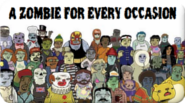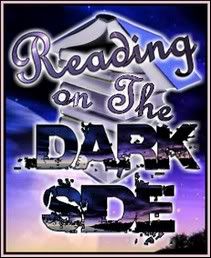
July 31st is the Norse holiday Lithasblot. The harvest festival; giving thanks to Urda (Ertha) for her bounty. Often alms are given to the unfortunate at this time, or loaves in the shape of the fylfot (the Sun-wheel, which fell into regrettable disrepute during the dark times of the second World War when the symbol was perverted as a symbol of chaos and darkness). Interestingly, Lithasblot 1941 was allegedly the time when the magical lodges of England performed rituals to keep the Nazi forces from invading their country; which may have worked, since Hitler eventually abandoned plans to invade Great Britain. Lithasblot has long been associated with ceremonial magic and magical workings.

Urda is one of the Norns in Norse mythology. Along with Verðandi (possibly "happening" or "present") and Skuld (possibly "debt" or "future"), Urðr makes up a trio of Norns that are described as deciding the fates of people. Urðr is attested in stanza 20 of the
Poetic Edda poem
Völuspá and the
Prose Edda book
Gylfaginning.
Urðr is together with the Norns located at the well Urðarbrunnr beneath the world ash tree Yggdrasil of Asgard. They spin threads of life, cut marks in the pole figures and measure people's destinies, which shows the fate of all human beings and gods. Norns are always present when a child is born and decide its fate. The three Norns represent the past (Urðr), future (Skuld) and present (Verðandi).
Urðr is commonly written as
Urd or
Urth. In some English translations, her name is glossed with the Old English form of
urðr; Wyrd.
 July 31st is the Norse holiday Lithasblot. The harvest festival; giving thanks to Urda (Ertha) for her bounty. Often alms are given to the unfortunate at this time, or loaves in the shape of the fylfot (the Sun-wheel, which fell into regrettable disrepute during the dark times of the second World War when the symbol was perverted as a symbol of chaos and darkness). Interestingly, Lithasblot 1941 was allegedly the time when the magical lodges of England performed rituals to keep the Nazi forces from invading their country; which may have worked, since Hitler eventually abandoned plans to invade Great Britain. Lithasblot has long been associated with ceremonial magic and magical workings.
July 31st is the Norse holiday Lithasblot. The harvest festival; giving thanks to Urda (Ertha) for her bounty. Often alms are given to the unfortunate at this time, or loaves in the shape of the fylfot (the Sun-wheel, which fell into regrettable disrepute during the dark times of the second World War when the symbol was perverted as a symbol of chaos and darkness). Interestingly, Lithasblot 1941 was allegedly the time when the magical lodges of England performed rituals to keep the Nazi forces from invading their country; which may have worked, since Hitler eventually abandoned plans to invade Great Britain. Lithasblot has long been associated with ceremonial magic and magical workings. Urda is one of the Norns in Norse mythology. Along with Verðandi (possibly "happening" or "present") and Skuld (possibly "debt" or "future"), Urðr makes up a trio of Norns that are described as deciding the fates of people. Urðr is attested in stanza 20 of the Poetic Edda poem Völuspá and theProse Edda book Gylfaginning. Urðr is together with the Norns located at the well Urðarbrunnr beneath the world ash tree Yggdrasil of Asgard. They spin threads of life, cut marks in the pole figures and measure people's destinies, which shows the fate of all human beings and gods. Norns are always present when a child is born and decide its fate. The three Norns represent the past (Urðr), future (Skuld) and present (Verðandi). Urðr is commonly written as Urd or Urth. In some English translations, her name is glossed with the Old English form of urðr; Wyrd.
Urda is one of the Norns in Norse mythology. Along with Verðandi (possibly "happening" or "present") and Skuld (possibly "debt" or "future"), Urðr makes up a trio of Norns that are described as deciding the fates of people. Urðr is attested in stanza 20 of the Poetic Edda poem Völuspá and theProse Edda book Gylfaginning. Urðr is together with the Norns located at the well Urðarbrunnr beneath the world ash tree Yggdrasil of Asgard. They spin threads of life, cut marks in the pole figures and measure people's destinies, which shows the fate of all human beings and gods. Norns are always present when a child is born and decide its fate. The three Norns represent the past (Urðr), future (Skuld) and present (Verðandi). Urðr is commonly written as Urd or Urth. In some English translations, her name is glossed with the Old English form of urðr; Wyrd.




No comments:
Post a Comment